I have a dataframe with 43 versions (columns) of a given process with an unique x-axis (DOY) but for the sake of the example we will suppose I have only 5 versions:
df<-data.frame(DOY = 1:100,replicate(5, runif(100)))
DOY X1 X2 X3 X4 X5
1 1 0.229167049 1.14301363 1.51866596 0.3975288 0.08408749
2 2 -1.201152742 0.78310939 0.73386803 1.0642240 0.08889227
3 3 0.855091117 -0.20336769 -1.43918386 -1.1315914 1.11606984
4 4 -2.503215715 -0.49935691 1.62382889 -2.4111611 2.08002344
5 5 1.060241917 -0.07352165 -0.09702405 0.2453719 -1.49648551
6 6 0.770752629 1.57174443 -1.11631512 -2.0473207 2.69395156
7 7 1.408792920 1.03667735 -0.42335742 -0.2194104 -0.23139360
8 8 0.322702898 0.27546292 -0.29637931 -1.5397543 -0.31331059
9 9 -1.579402811 -0.29110898 0.85435901 0.1051316 0.94311947
10 10 -0.004535567 0.40224405 -0.92110478 -1.2431362 0.46812342
I want to create a ggplot with the following output:
g[![enter image description here][1]][1]gplot(df, aes(x=DOY)) +
geom_line(aes(y=X1, color = "A")) +
geom_line(aes(y=X2, color = "B")) +
geom_line(aes(y=X3, color = "C")) +
geom_line(aes(y=X4, color = "D")) +
geom_line(aes(y=X5, color = "E"))
 But due to my high number of columns this approximation its intratable, so im trying to apply
But due to my high number of columns this approximation its intratable, so im trying to apply melt or gather for a more easy representation, but I can't do it without lost the common x-axis.
My objective is, in first instance, achieve something like this:
To finally obtain an an animation with this effect:

